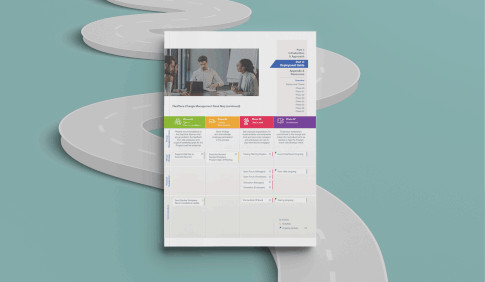Effective project management is critical to business performance and organizational success. In fact, according to Project Management Institute, for every $1 billion invested in the United States, $122 million is wasted due to poor project performance. So how can your organization improve its operations and bottom line?
When it comes to managing projects, the answer lies in structure. Let’s take a look at five leading project management approaches and when to use them:
Waterfall Method
Most likely, this project management strategy is the one you’re most familiar with. Also called the “Traditional Approach”, the waterfall method is a linear approach that consists of several static phases executed in a specific order. While there are multiple interpretations of the phases in the waterfall method, the method’s activities generally fall into the following linear steps:
- Conception
- Initiation
- Analysis
- Design
- Construction
- Testing
- Implementation
- Maintenance
Because this approach is sequential, teams generally do not return to a prior phase without completely starting the project from the beginning. This limitation means that extensive upfront planning must be done at the beginning of a project to avoid opportunities for change, error, and waste.
When Should You Use the Waterfall Method?
As you can imagine, the waterfall method works best when there is a clear vision of what the final product should be, and when you do not plan to change the scope of the project. This approach is generally best when you have a large-scale project with long-term deadlines. Waterfall project management styles are difficult to execute when faced with aggressive deadlines.
Agile Approach
Agile Project Management is an iterative process that allows for rapid adjustments throughout a project. This approach has come into vogue with technology start-up culture, and is compromised of “sprints” – short, defined cycles that contain a list of deliverables, which are prioritized by the customer. A significant benefit to this model is that it provides customers with a strong sense of ownership by letting them work extensively and directly with the project management team. Because of this heavy market involvement, Agile Project Management tends to be more involved and all-encompassing than other styles.
When Should You Use Agile Project Management?
Agile methodologies work best when members of the development team are highly motivated and fully committed to the project. These projects are typically urgent and have a high degree of complexity and novelty. That means long hours, added stress, and occasional rework or mistakes, which can put pressure on a team.
Another note about Agile project management: because you’re working so quickly, it can be more difficult to adopt this model with remote teams due to the added managerial load and asynchronous work styles.
Extreme Project Management
Extreme Project Management helps organizations manage the unknown by allowing alterations in plans, budgets, and final outcomes at any project stage. Unlike other project management approaches, extreme project management offers an open-ended, flexible, and undeterministic way to handle complex business problems. Businesses that rely on scientific discovery/invention, or organizations like Apple that are pushing the envelope of known technical capabilities, will often employ this method due to its tolerance for uncertainty.
When Should You Use Extreme Project Management?
Extreme Project Management works best for complex and uncertain projects that involve frequent changes to conditions as the project progresses. This approach is commonly used when it is not possible to fully understand a project’s requirements and guidelines are driven by market changes. The project team must be willing to make several attempts to achieve the desired result.
Critical Chain Project Management (CCPM)
The Critical Chain Project Management Approach (also known as Critical Path) was developed in response to poorly executed projects that resulted in longer than expected durations, frequently missed deadlines, budget overruns, and missed deliverables. CCPM focuses on the use of resources required to execute project tasks. The “critical chain” of the project is the longest sequence of tasks that are constrained by the availability of a particular resource (which could be a team member, a natural resource, a time window, a budget, etc.). In order to address potential resource availability issues, the project manager builds in safety buffers to ensure projects are on-time.
The 3 types of safety buffers are as follows:
- Project buffer: A project buffer protects the project completion date, which might be variable due to changes in activity durations on the critical chain.
- Feeding buffers: A feeding chain is any path of activities merging into the critical chain. To protect against delays on critical paths, feeding buffers are inserted between the last task on a feeding path and the critical chain.
- Resource buffers: Resource buffers can be set alongside of the critical chain to ensure that the renewable resources are available to work on critical chain activities as soon as they are needed.
When Should You Use Critical Chain Project Management?
CCPM should be used when projects are concerned with resources. Ultimately, this approach is effective in sending quality deliverables on time by proactively removing constraints.
Event Chain Methodology
Event Chain Methodology suggests that a single constraint can create a chain of constraints and severely hinder a project. Development teams can use past data that has been collected over time to determine if there is a potential negative event or constraint and identify preventive measures. This prepares the organization to take action and eliminate constraints or work around them to ensure that projects are completed on schedule.
When Should You Use Event Chain Methodology?
Event Chain Methodology should be used for critical projects when there is an unknown event or event chain that is affecting projects. For example, government agencies may take an event chain methodology approach when dealing with an administrative transition that could have a negative impact on the organization’s ability to keep a project moving forward.
Does your organization lack follow-through when important projects are involved? Ask The Clearing to weigh in on project management approaches that will work best for you!


